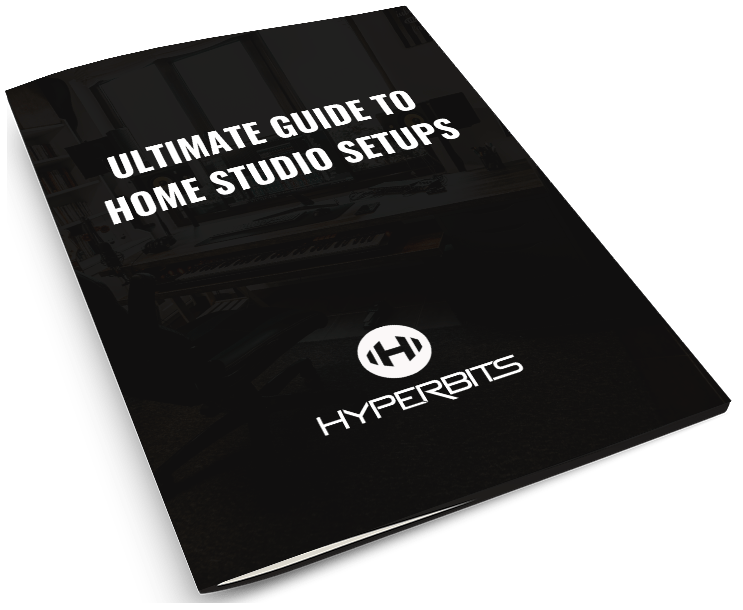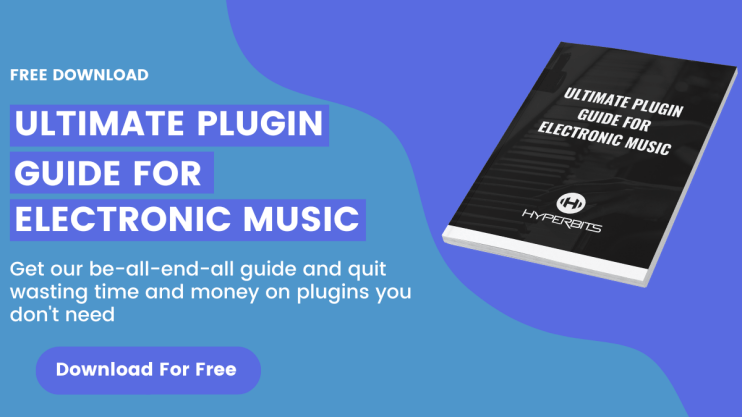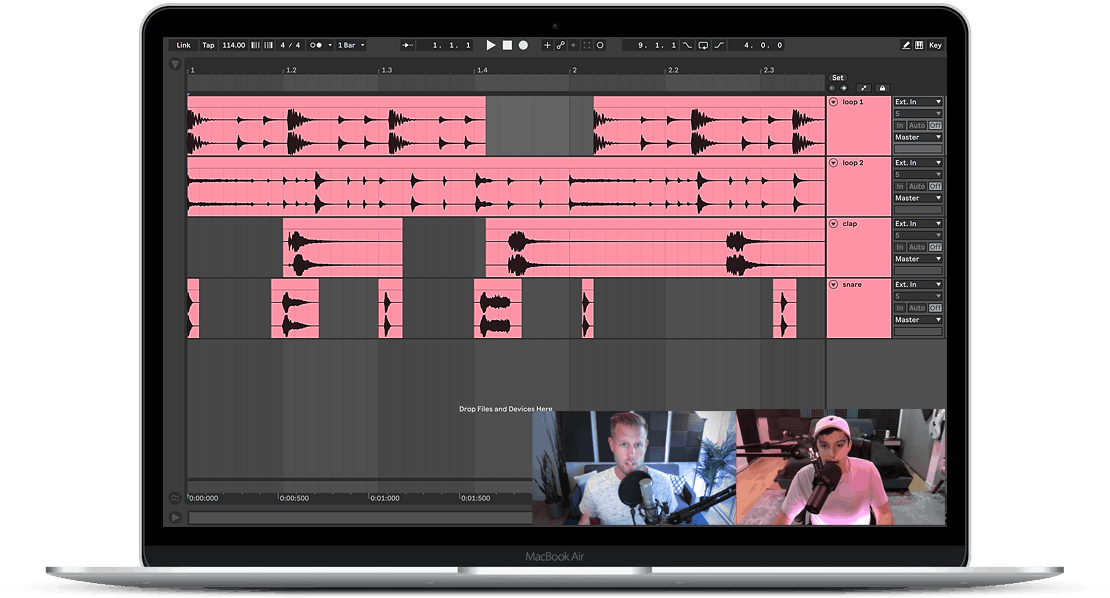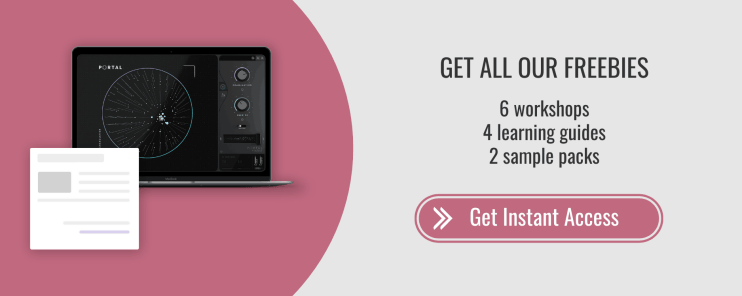The Ultimate Home Studio Setup: 21 Pieces of Gear You Need
“The best investment is in the tools of one's own trade.”
— Benjamin Franklin
You love music — so much that you started actually producing music — so what exactly goes in to building the ultimate home studio setup?
Getting the right tools might be easier than you think.
Apparently, you can win 5 Grammy's with less than $3,000 of gear.
That said, this guide will help breakdown all the equipment you should consider purchasing in your first two years of producing to help you get everything you need in your home studio setup.
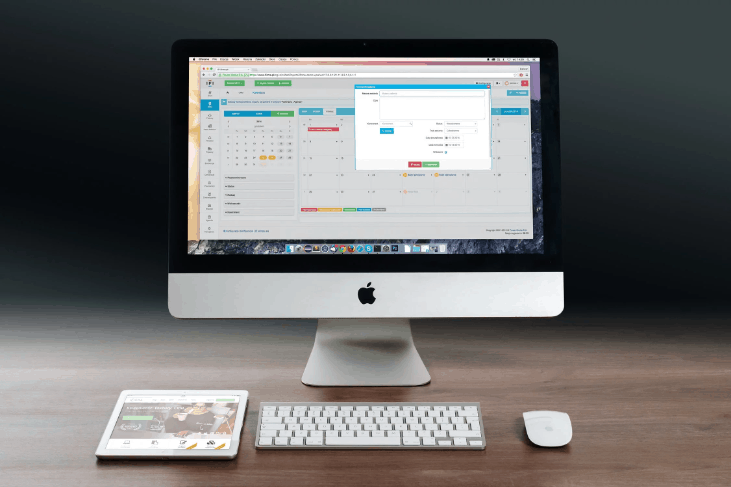
1. Computer
At the center of any modern studio setup, is the computer. Chris Athens, who has most likely mastered many records you love, is quick to admit that his computer is the center of his studio.
His work ranges from Drake to AC/DC, and he says that you can take away thousands and thousands of dollars of analog gear and he will still deliver a killer master with just his computer and some relatively inexpensive software.
It’s important to remember that your computer will be the foundation for your entire studio. It should be the first piece of gear you get, and you should make sure to get one that will last you in the long run.
Items to consider:
- Mac or PC
- Desktop or laptop
- Hard Drive capacity
- Amount of RAM
- Processor
2. Computer Monitor
Even if you end up getting a laptop, screen real estate is super valuable for production. I personally use a 27” monitor, and I recommend getting the largest screen size that fits your space and budget.
Product to consider: Dell 27” Monitor SE2717HR
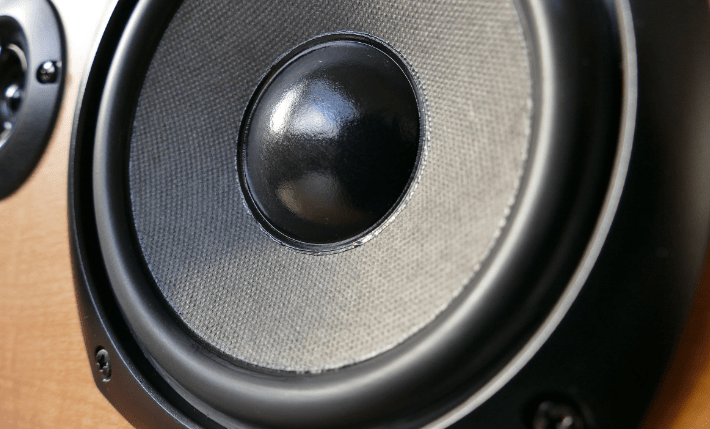
3. Monitors
More than your other tools, your monitors will likely have the greatest effect on your sound. The more accurate your monitoring is, the easier time you’ll have crafting professional mixes.
When searching out monitors, try to avoid getting “ported monitors” at all costs. It’s a technique used to try to get cheaper monitors to artificially sound better but it comes with a whole slew of issues.
You want to try to find monitors with a fairly flat response, but you can always use software like Sonarworks after the fact to try to tighten things up a bit, and compensate for minor room trouble.
Products to consider: Amphion 18 (high end), Focal Shape 65 (high end), JBL 305P (budget), Yamaha HS Series (budget)
4. Headphones
Since sound is very dependent on your room, if you are in an untreated space, consider using headphones instead of traditional monitors. Try to find open back headphones for producing, mixing, mastering purposes.
Even if you’re using monitors, you will still need headphones to use while recording. For this purpose you should be looking for a closed back pair.
Open back headphones allow for bass frequencies to escape from the headphone and not build up, allowing for clearer and more accurate low end. The drawback is they leak a lot of sound, so are not ideal for use in public or while recording.
Products to consider: Audeze LCD line (high end), Sennheiser Open Back 600s (mid-tier), Audio Technica M50X (budget)
5. DAW
Your DAW, or Digital Audio Workstation is the main piece of software you’ll be using to make music. You likely already have one if you are reading this, but some things to consider are compatibility with your OS (Mac or Windows), built in features, cost, and stability.
No matter which DAW you choose though, remember that it is just a tool and that amazing music can be made with any DAW. It really just comes down to what you do with it.
6. Additional Software/Plugins
Your DAW will have many included tools (known as ‘stock plugins’), and likely already includes everything you need to make amazing music.
It should be noted though, that you can get extra functionality and achieve better results faster by expanding your toolkit, which is why every professional relies on a collection of external plugins. This makes additional software and plugins a necessity as part of any home studio setup.
There are many amazing free plugins you can find, and of course an infinite amount of high end plugins to upgrade to. A great place to start is the Slate All Access Pass, which gets you thousands of dollars of plugins for under $15/month.
For a more extensive guide on plugins, check out our Ultimate Plugin Guide.
Products to consider: Slate All Access Pass, Soundtoys Bundle, Fabfilter, Waves, Universal Audio
7. Interface
The sound coming out of your computer is going to be affected by the digital-to-analog converters in your interface, and your recordings will be greatly affected by the preamp in your interface. Luckily these days you can get quality converters on a budget.
Pro Tip: Try to use Thunderbolt if you can. It’s a much faster connection than USB and it won’t eat up one of your USB ports.
Products to consider: Apollo Twin X Duo, Focusrite Scarlett 2i2
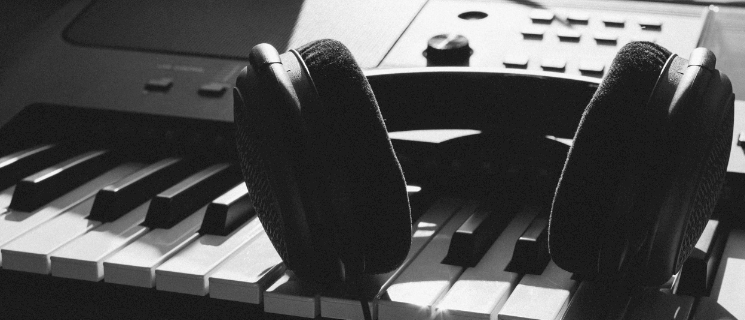
8. MIDI Controller
Not just a piano, a good MIDI controller will have options like pitch bend, modulation, and drum pads.
These features, in my opinion, are imperative for creativity and inventiveness and make this piece of equipment a must-have for any functional home studio setup.
Products to consider: NI Komplete Kontrol, Behringer Motor 61
9. Microphone
Gone are the days where you need an extensive mic locker to track vocals. The ultimate home studio design only needs two mics — a dynamic mic, and a condenser modeling mic.
A dynamic mic will perform super well even in an untreated environment, and a modeling mic gives you access to a virtual mic locker.
High-end engineers collect thousands upon thousands of dollars of microphones so that they can match the microphone they want for the record style and vocalist they are recording.
With virtual modeling microphones you can emulate the tones of microphones worth tens of thousands of dollars with a relatively inexpensive microphone/software combination, practically eliminating the need for a mic locker.
Products to consider: Shure SM7B, Electro Voice RE2020, Slate VMS, Townsend Sphere, Antelope Edge
10. External Hard Drive
Music projects take up a lot of space. A LOT of space. Having an external (or several!) allows you to store backups of your computer in case of a failure, and to offload large files like sample libraries or old projects to keep your internal drive lean and mean.
Of course, physical hard drives CAN fail, so consider looking for a cloud-based solution like Dropbox or Backblaze to make your studio setup fool-proof. Splice.com even offers FREE cloud backup for your music projects!
Products to consider: WD Passport
11. USB Splitter
Let’s face it — most computers don’t have enough USB ports for all your peripherals. You can get a cheap USB splitter from Amazon, but then you may have trouble powering your devices from it and you don’t want to draw too much power from your computer.
If you need more power, consider getting a USB splitter with an external power supply. Having additional USB ports was a game changer in creating my ultimate home studio setup.
Products to consider: Anything by Juiced

12. Cables
You’re going to need a lot of cables. TRS, XLR, Thunderbolt, etc. Sweetwater has an extremely useful tool to help you find the right cables for your needs.
13. iLok USB
Love or hate iLok (I love ‘em), most major audio software companies run their licensing through iLok’s platform, and having a USB gives you a lot of flexibility.
For any serious music producer, chalk this up as a must have.
14. Desk
Though not as glorious as some of the other items on this list, you need a sturdy desk that looks great and makes you happy to work on. I personally built my desk from parts from Ikea, but you can also get a desk designed for studio work.
Plus, sitting for long hours can be damaging to your health. Check out our complete guide to Avoiding Lower Back Pain for Music Producers.
Products to consider: Platform by Output, Uplift Standing Desks
15. Chair
We studio guys sit a large chunk of the day, and it’s easy to develop back, leg, and neck problems from poor posture. Your chair is not the place to try to save money. Make sure you get something with great lumbar support!
Products to consider: Herman Miller Aeron, Sihoo Ergonomic Office Chair
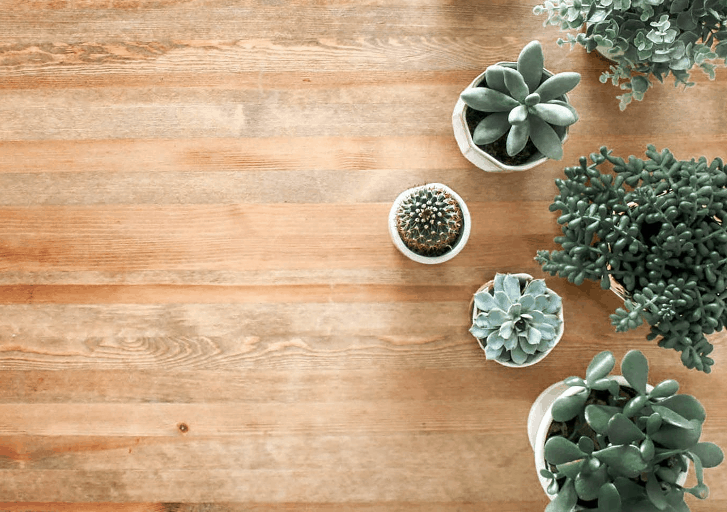
16. Vibe Items
Plants, led strips, colored bulbs, knick knacks, merch from your favorite audio companies, and toys will all make your home studio a more fun and creative environment to work in.
Artists always love when I ask them what their favorite color is, and I tell my Google Home to set my wifi connected vibe lights to that color. It’s a simple thing, but it just makes my space that much more fun to work in.
You will be spending a lot of time in your home studio, so why not make it a place you love to spend time in?
Products to Consider: LED Glow Lighting Kit, IKEA Plants, West Elm Area Rugs
17. Stands
I'm sure stands aren't the first thing you think of when you think ultimate home studio setup — and yet, you now have a lot of gear and will need a place to put all of it.
X-stands, mic stands, and desk mic stands are all going to help you with your setup.
Products to consider: Rode PSA1 Swivel
18. Treatment
Don’t underestimate the importance of treatment in your studio. It can be argued that treatment is as important as your speakers choice. There is a lot of great information about treatment in the Hyperbits Masterclass, but for now I will suggest two premade options:
- Primacoustic London: This will provide a predesigned kit depending on the size of your room that will help with both monitoring and recording.
- Kaotica Eyeball: If you aren’t ready to treat your room, this will be extremely helpful in making your recordings cleaner by not picking up as much room reflections.
19. Phone Stand
An underrated useful part of my studio desk is that I have a phone stand to place my phone so I have easy access and viewability to my business messages/calls while I work.
This also makes for an easy and inexpensive way to film content for social media, hands-free.
Products to Consider: Phone Tripod, Gooseneck Mount

20. Cheap Speakers
Let’s be honest, most people won’t be listening to your music in a well-treated, perfectly balanced home studio. It is super helpful to reference your mixes on some more commercial speakers to get a feel for how they will sound to your average listener.
Products to Consider: Cheap Speakers on eBay, Amazon Alexa, Google Nest
21. Outboard Gear
This is definitely not a necessity by any stretch of the imagination, but if you’re a hardware kind of person, consider getting some analog gear like a classic preamp or compressor to use while tracking.
I personally prefer keeping things as much on my computer as I can, but this is a personal preference thing.
Products to consider: Neve 1073, UA 1176, Empirical Labs Distressor
Pro Tip: there are also clones of these iconic pieces of gear that will be less expensive than the original manufacturer’s version)

Final Thoughts: The Ultimate Home Studio Setup
Starting the journey of putting together your home studio setup can be extremely daunting — and expensive. The good news is you don’t need to get all of these items at once. For a while I produced on just a laptop and a pair of headphones.
I only recommend upgrading once your gear and technology is clearly holding you back from leveling up. Eddie Wohl, 6X Emmy winning composer, gave me the advice, “Only make purchases that will make you more money, or save you time. And saving time is making more money because you can do more work.”
As you begin to start making money from your music project you can put aside an amount to reinvest into your gear. Ultimately, it’s you — not your gear — that is responsible for how you will sound.
All of the gear you purchase will make your job easier, or simply be for fun. Once in a while, that gear will also help you squeeze a bit more out of your current skill set.
With this list, you are well on your way to creating the ultimate home studio setup.





